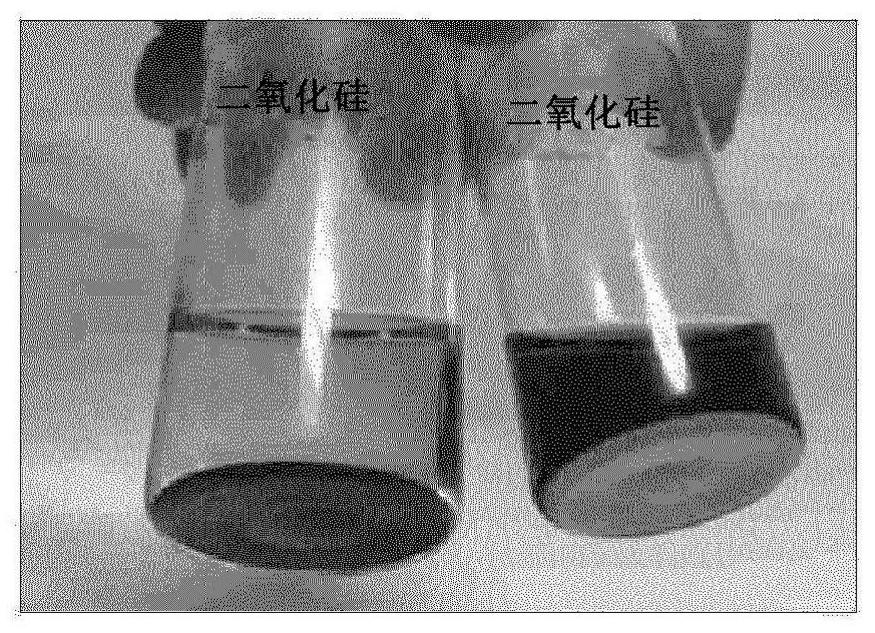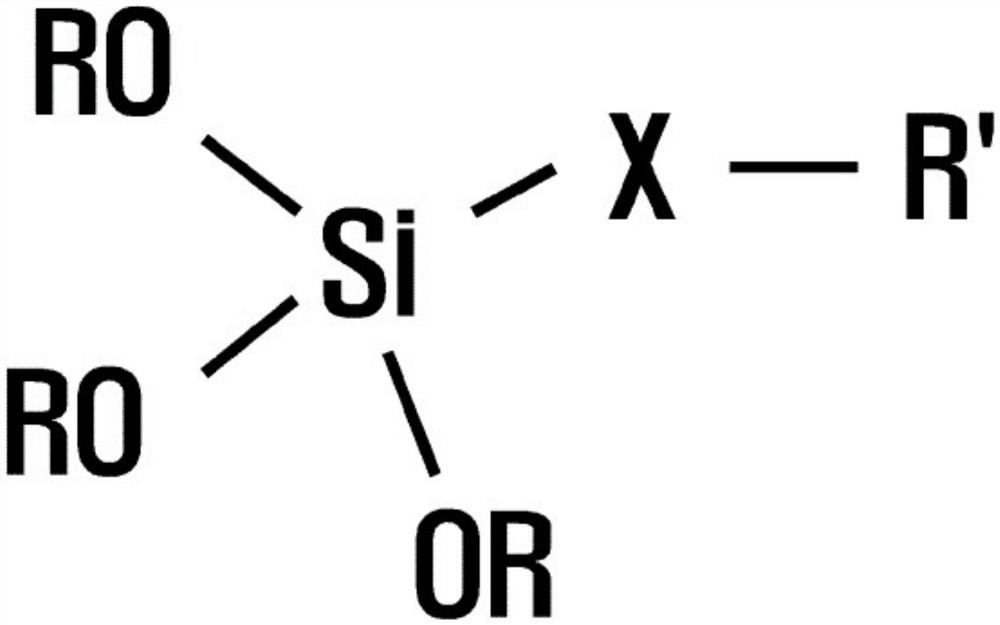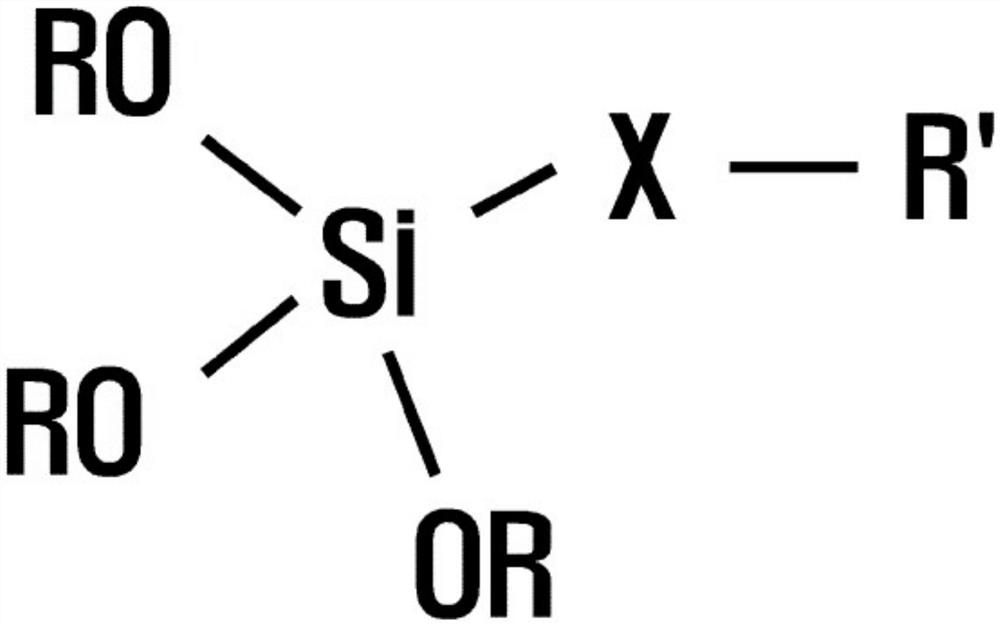Gardenia red pigment stably adsorbed on surface of silica, and cosmetic composition containing same
A technology of silicon dioxide and gardenia red, which is used in medical preparations containing active ingredients, treatment of dyed low-molecular-weight organic compounds, cosmetics, etc. Wide application range, improved thermal stability
- Summary
- Abstract
- Description
- Claims
- Application Information
AI Technical Summary
Problems solved by technology
Method used
Image
Examples
Embodiment 1
[0035] Preparation of gardenia red pigment adsorbed on amine group-introduced silica
[0036] Silica and a silane compound represented by the following Chemical Formula 2 are reacted under reflux in water or an organic solvent (ethanol or hexane) for 12 hours to prepare an amine group-introduced silica, and after the amine group-introduced silica is prepared, about approx. Silica introduced into the amine group was added to an aqueous solution in which 10% of the gardenia red pigment was dissolved in water with 5 times the mass of the silica, stirred for 30 minutes for adsorption, and after filtration, an organic solvent (ethanol or hexane) was used. ) and water are washed successively to remove the unadsorbed gardenia red pigment, thereby preparing the gardenia red pigment (by weight ratio, [gardenia red pigment] that is adsorbed on the silicon dioxide introduced into the amine group: Silica] = 5:95) (reference: Soto-Cantu E et al., Langmuir, 28(13):5562-9, 2012).
[0037] ...
Embodiment 2
[0039] Preparation of gardenia red pigment adsorbed on amine group-introduced silica
[0040] Silica and a silane compound represented by the following Chemical Formula 3 are reacted under reflux in water or an organic solvent (ethanol or hexane) for 12 hours to prepare an amine group-introduced silica, and after the silica mass is about Silica introduced into the amine group was added to an aqueous solution in which 10% of the gardenia red pigment was dissolved in water with 5 times the mass of the silica, stirred for 30 minutes for adsorption, and after filtration, an organic solvent (ethanol or hexane) was used. ) and water are washed successively to remove the unadsorbed gardenia red pigment, thereby preparing the gardenia red pigment (by weight ratio, [gardenia red pigment] that is adsorbed on the silicon dioxide introduced with amine groups: [introduced with amine groups] Silica] = 5:95).
[0041] [Chemical formula 3]
[0042]
Embodiment 3
[0043] Preparation of gardenia red pigment adsorbed on carboxyl group-introduced silica
[0044] Silica and a silane compound represented by the following Chemical Formula 4 are reacted under reflux in water or an organic solvent (ethanol or hexane) for 12 hours to prepare a carboxyl group-introduced silica. 10% of the gardenia red pigment was dissolved in an aqueous solution of 5 times the mass of silica, and the silica introduced with the carboxyl group was added, stirred for 30 minutes for adsorption, and after filtration, an organic solvent (ethanol or hexane) and an organic solvent (ethanol or hexane) were used. The water is sequentially washed to remove the unadsorbed gardenia red pigment, thereby preparing the gardenia red pigment adsorbed on the carboxyl group-introduced silica.
[0045] [Chemical formula 4]
[0046]
PUM
 Login to View More
Login to View More Abstract
Description
Claims
Application Information
 Login to View More
Login to View More - Generate Ideas
- Intellectual Property
- Life Sciences
- Materials
- Tech Scout
- Unparalleled Data Quality
- Higher Quality Content
- 60% Fewer Hallucinations
Browse by: Latest US Patents, China's latest patents, Technical Efficacy Thesaurus, Application Domain, Technology Topic, Popular Technical Reports.
© 2025 PatSnap. All rights reserved.Legal|Privacy policy|Modern Slavery Act Transparency Statement|Sitemap|About US| Contact US: help@patsnap.com



